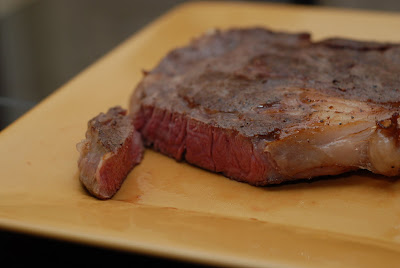I cook mine in a 20qt pot and in the end I will have about 12qts of stock that I will freeze.
Time: 4 - 9 hours. In my experience the longer the better.
You'll need:
1 large pot, mine is 20qts.
1 other pot, smaller than the first but big enough to hold at least 12qts.
1 small strainer
1 vegetable steamer (optional, you can probably do without it but it is helpful)
a bowl full of cold water
This stock consisted of:
chicken bones, cooked and uncooked
pork bones, cooked
onion skin
thyme
celery
parsnip
carrot (ends and peelings)
vinegar
sea salt
Add in pretty much whatever else you might have. Beef bones are fine too and I don't worry about the amounts of anything other than the bones. Lots and lots of bones.
There are 5 steps
Step 1: Throw it all in the pot. Add some sea salt and vinegar if you'de like.
Step 2: Simmer it for 8 hours or so
Step 3: Strain it
Step 4: Cool it
Step 5: Freeze it
That's it, but there are a few details to sort out along the way. Read on.
Here is my pile o' stuff out of the freezer:
And here it is all in the pot filled with cold water. Here I add some sea salt (about 1-2tbsp) and some vinegar, about a1/2 cup:
Now turn the burner on high and and when it begins to simmer turn it down to low. You want a very gentle simmer. Try not to let it get to a boil, remember, it'll be on the stove for a long time so don't rush it.
The small strainer, vegetable steamer and bowl of cold water. Simple tools for a simple job.
What's the job? Skimming protein of course.
After you've got it down to a simmer you'll start noticing a bubblly foam forming on the top. It is your job to skim it off with the small strainer and then rinse it in the bowl of cold water. You only need to do this a couple of times, after about 2 hours you shouldn't need to do it anymore.
This is where the vegetable steamer helps. Push it down into the stock far enough to create a nice little protein pond. You would have to skim around everything in the top photo, but in the bottom photo the steamer pushes the stuff in the stock, making the job much easier.
Skim all that white stuff off, about every 15 minutes or so for the first 2 hours. After that you'll have something that looks like this:
Ok, good time to drink beer because you're pretty much done for the next 7 hours. Keep an eye on it to keep it at a very low simmer.
Many hours later you'll have something like this:
Now we'll want to strain that into another pot. You'll probably need someone to help you.
Some folks recommend cheesecloth to strain it as well. If you have some, great. If not a regular fine mesh strainer will work just fine.
Now you've got a second pot full of stock that you need to cool. Do not put 12qts of 200F stock into your refrigerator. I like to cool it in a water bath in the sink. If you have ice, great. If not, no big deal. Just fill up the sink with cold water and let it sit for 10 minutes. Then drain the water, which will be warm, and fill it up again. The 3rd time around I add the ice.
After about 30 minutes the ice will have melted and the stock will be around 76F. At this point I put it in the fridge overnight.
After it has cooled in the fridge overnight, the fat will have risen to the top and congealed. Scrape it off with a large spoon and freeze that too. It is wonderful for Sauteing anything. Especially garlic and onions.
After you skim the fat off you are left with something like this:
Now just ladle it into a bunch of containers and store it in the freezer. I put most of mine in 2qt containers and a few 1 and 2 cup containers for when I only need a small amount.
Now when it comes to stock there are different kinds. There is the colored water kind, like what you'de buy in a store but I tend to think the thicker the better. In the video below you'll see this has the consistency of jello. If you don't get it this thick right away don't worry, you've still made kickass stock.
Here it is, the holy grail of stock:
Now what can you use it for? If you like to make Risotto this stuff kicks ass. I also use it anytime I make rice and of course any soup.
Now throw out that crap chicken flavored water they sell at the store and get to making yourself some real stock!























